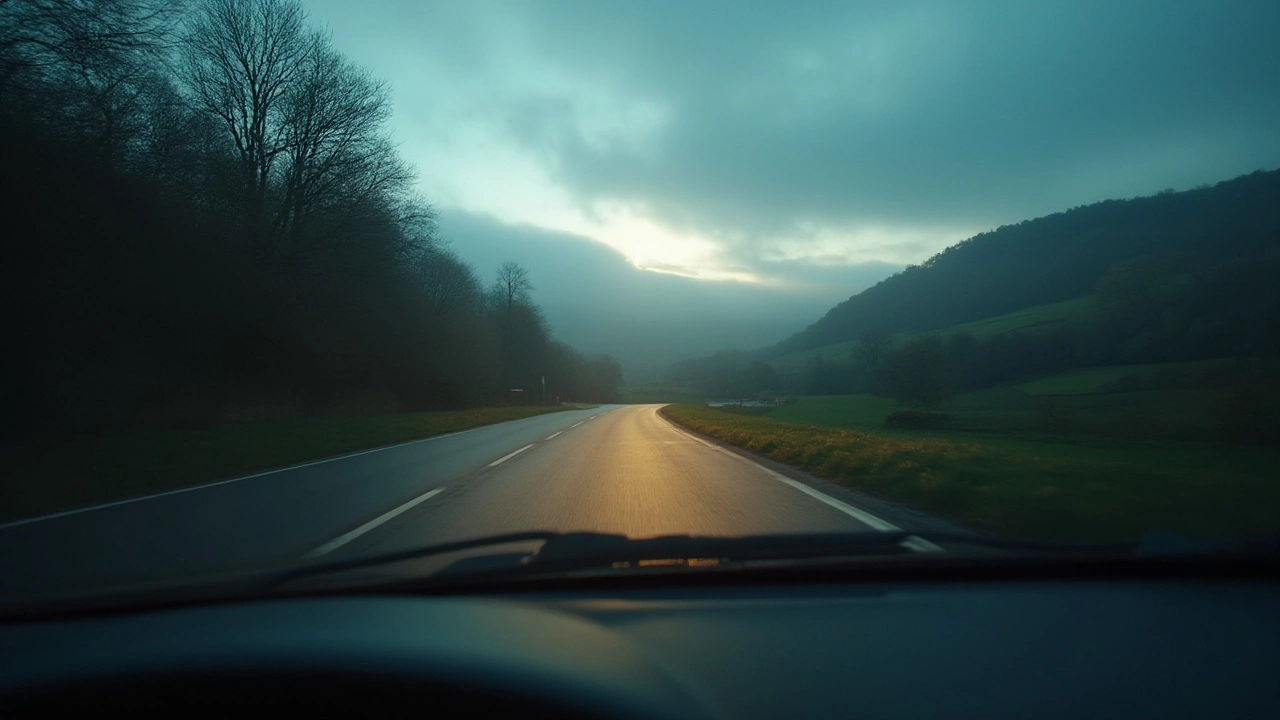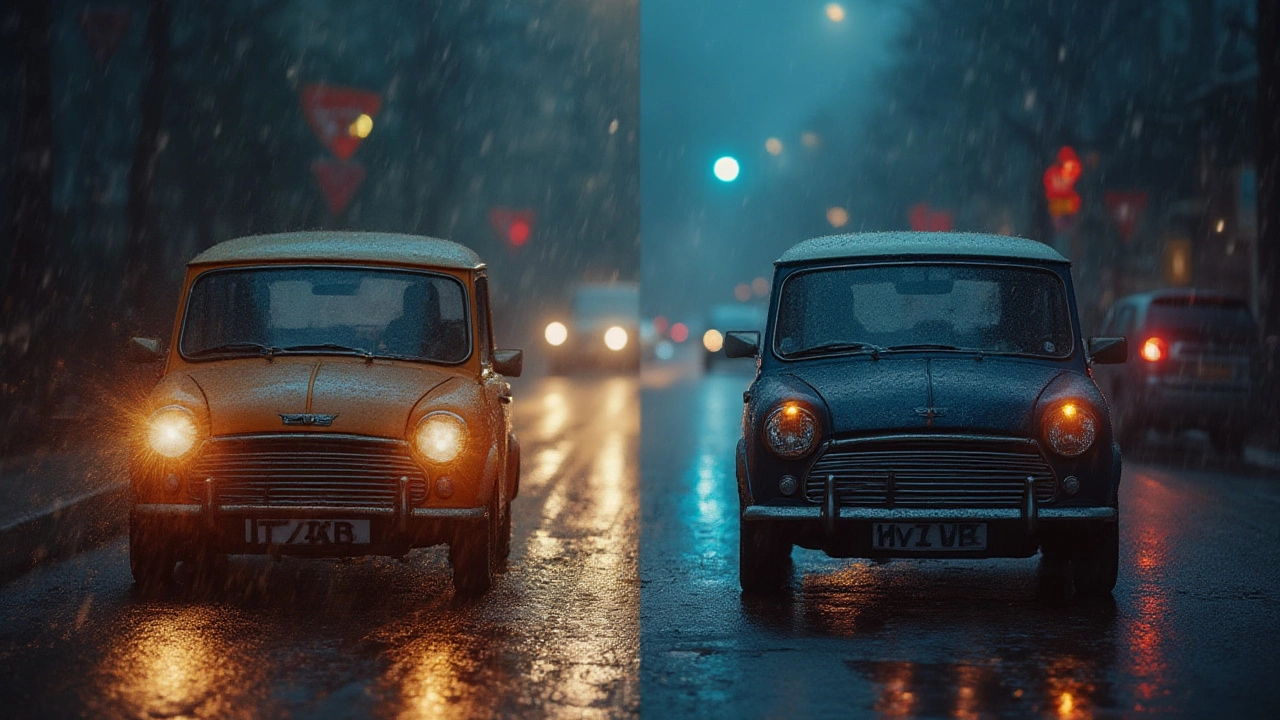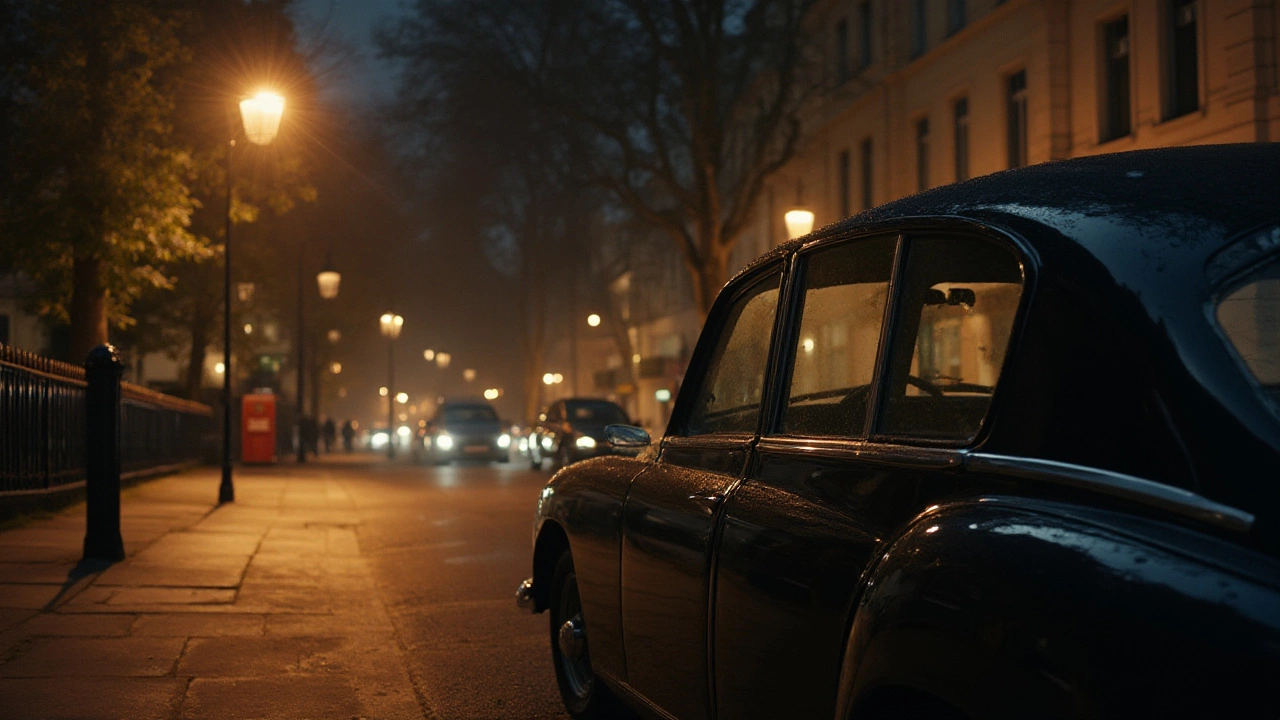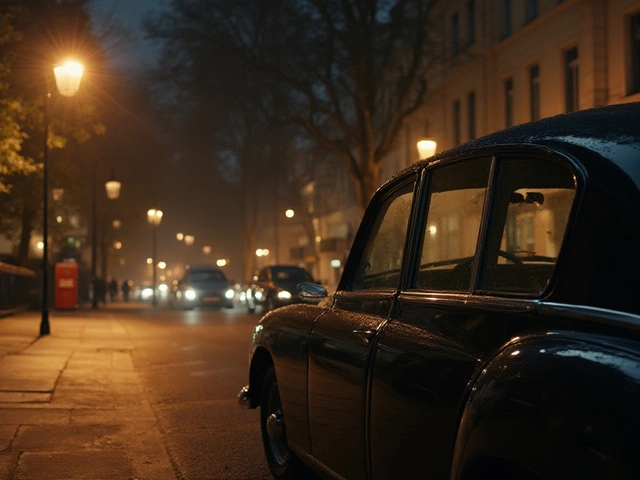If you’re rolling down a dark road and struggling to spot a stray cyclist, you know immediately that visibility—especially at night—is a big deal. Many people don't realize that the tint you love in the daytime can make your nightly commute feel like a suspense scene from a thriller, squinting and fighting glare from headlights. But which window tint hits that sweet spot between looking cool and not missing a stop sign at 2 a.m.? The answer isn’t just about picking the darkest film as possible. It’s about understanding what’s actually safe, legal, and practical when the sun goes down.
How Tints Affect Nighttime Vision
Night driving throws a lot of curveballs your way: unpredictable lighting, blinding high beams, and surprise pedestrians. The wrong tint can crank up the stress by making your surroundings disappear. You might have noticed how even some prescription sunglasses feel useless after sunset. The same thing happens with dark tints because they limit the light coming into your car—right when your eyes are begging for more. If you’re thinking about tinting all your windows the same, hold on. Factory tints usually come in around 70% Visible Light Transmission (VLT) or higher—that means they let 70% of outside light pass through. This is actually smart for night driving, giving you a subtle shading during the day but not turning your windshield into a cave at night.
Most states in the US are strict about the legal limit for windshield tints. A common standard is around 70% VLT on front side windows, and only the top 4 to 6 inches of the windshield can be tinted. These rules exist for a reason: For every drop in VLT, your eyes have to adjust harder in the dark. Research done by the National Highway Traffic Safety Administration (NHTSA) found that anything below a 50% VLT, especially on the driver’s window, can reduce your ability to spot hazards at night. They’re not just being party poopers—lowering that number means lower safety.
"Tinting windows with VLT below legal limits impairs drivers’ night vision and increases crash risk," said NHTSA in a 2023 safety bulletin.
Keep in mind, our eyes need every little bit of help when it’s dark. Too much tint, and headlights from other cars can look like blurry, spooky halos instead of sharp lights you ought to dodge. But here’s a surprise: Even clear or very light ceramic tints can reduce glare at night. These newer films use advanced tech to cut the harshest light wavelengths—usually from LED and HID headlights—without shading all visible light. So, you’re not just stuck choosing between clear glass and limo-black. The technology offers options that are both subtle and functional.
Ever notice those pale blue or yellow glasses made for nighttime use? The effect is similar with very light tints. They can reduce eye strain, especially if you do a lot of highway miles after dark. But don’t just slap any film on your car. Quality matters. Cheap tints can actually increase distortion, scattering light in weird patterns and making things worse. Spending extra on name brand or professionally installed films (like 3M’s Crystalline or Llumar’s Air Blue) might set you back more upfront, but you really notice the difference once you’re staring down a dark country road.
Here’s a quick glance at common tint percentages and what you’ll probably experience:
| Tint % (VLT) | Daytime Effect | Nighttime Effect |
|---|---|---|
| 90% | Almost invisible | Zero impact |
| 70% | Light shading, glare reduction | Minimal effect |
| 50% | Noticeable tint, lower glare | Slight reduction in visibility |
| 35% | Dark look, significant shading | Harder to see, especially on country roads |
| 20% | Very dark, privacy level | Challenging, not legal for front windows in most places |
So, what does this mean for you? Go lighter on your driver and front passenger windows. You get the benefits of a best tint for night driving, still keep out some glare and UV. For back windows, you have a little more freedom—but if you’re ever the passenger during a night trip, you’ll be glad you stayed conservative.

Comparing Different Tint Materials and Their Impact on Night Vision
Here's where the story gets interesting. Not all tints are just plastic film with color. There are dyed, metalized, ceramic, and hybrid options. Some absorb light, others reflect it, and the latest tech even filters light on a wavelength level. What’s important for nighttime is: can you see the road, spot street signs, and maybe even keep those blue-white LED headlights from blinding you now and then?
Dyed window films are usually the cheapest and most common type. They provide a nice look in bright sunlight and do offer some reduction in headlight glare. But they can be a pain for nighttime use. Colors fade, and you might notice increased graininess as your eyes strain. Metalized films offer excellent heat rejection but can mess with your phone's signal—not ideal if you rely on GPS to get you home. And at night, the increased reflectiveness can sometimes double up distracting lights because of extra reflections inside the glass.
Ceramic tints are the gold standard these days. Instead of just blocking visible light, they reject heat and filter UV without making things look too dark. According to a 2024 survey by Consumer Reports, ceramic tints get high marks from nighttime drivers for their ability to reduce glare while keeping the glass almost as clear as stock, especially at VLT levels above 70%.
If you want something with serious science behind it, try looking at IR (infrared) blocking films. They usually offer a 70%-80% VLT—legal nearly everywhere for front windows. These tints block the hot infrared rays that cook your car’s interior, slash UV exposure for your skin, and give you crystal clear nighttime visibility. I put a 70% ceramic IR film on my daily driver last summer after Emily and I both got tired of squinting at headlights—night and day, we felt less tired after long drives.
For added safety, skip the blue or mirrored films, especially if you expect wet weather. Rain plus dark tint equals double trouble—the little droplets scatter any nearby light, making even street lamps blurrier. If you do lots of rural driving, go for a non-reflective ceramic or IR tint with a VLT at 70% or above. You won’t win a privacy award, but you’ll see every raccoon before it gets too close for comfort.
Don't ignore the maintenance factor, either. All tints need to be kept clean. Even a light 70% ceramic tint can become a hazard if it's covered with dust, fingerprints, or old adhesive streaks. Make regular cleaning a habit, especially before a long night trip.

Tips for Maximizing Night Driving Safety With Window Tints
Let's get practical. So you want a tint that's legal, helps with glare, and doesn’t turn your next late-night pizza run into a guessing game. Here’s the lowdown to make the most of your tinted windows when the sun goes down.
- Stay within legal limits. Odds are good, your state caps front window VLTs at 70%. It’s tempting to go darker, but cops can and do use handheld meters. Getting ticketed for non-compliant tint is annoying; but worse, you won’t be able to see clearly if the limit’s too low.
- Pick quality tint over cheap deals. Investing in ceramic or IR-blocking films is worth it. They last longer, look better, and actually improve your night driving experience. Shade isn’t the only consideration: Clarity and how the film handles glare matter more than how your car looks parked under neon lights.
- Don’t forget about your windshield. It may not be legal to tint most of the windshield, but a strip across the top (the "eyebrow") is usually okay—make sure it’s a light, professional installation. This can help block streetlights and LED billboards that always seem aimed directly at your eyes.
- Cleanliness really counts. Dirty glass plus tint equals smudgy, scattered light, which will stress your eyes out faster than you expect. Keep a microfiber cloth in your glovebox and wipe it down regularly.
- Watch for wear and tear. If you start seeing bubbles, fading, or scratches, replace your tint. Even minor damage can mess with the way light travels through, leading to glare or distorted vision at the worst possible time.
- Be smart about wide-open country. City driving is forgiving; rural roads, not so much. If you do a lot of late-night trips on those dark stretches, consider skipping rear window tint, or choose lighter films all around. That peripheral light can literally save a life by revealing an unexpected obstacle.
- Remember the inside counts too. A dark interior (black or navy seats and dash) makes it even harder to see out, especially with tint. If you notice things getting too gloomy, a lighter dash mat or seat covers can help reflect some light and improve your overall visibility.
Honestly, the best tint for night driving isn’t the darkest or the flashiest—it’s the one that quietly does the job without you even noticing. Protects your eyes, keeps you safe, and meets the law. Anything above 70% VLT in a ceramic or high-quality IR-blocking film is hard to beat. Car companies know this; that’s why most factory glass is so mild. It works, and it doesn't get you in trouble.
If you want extra assurance, ask your installer for a sample piece and tape it up for a week or two. Drive your usual route at night. See if you catch those crosswalks, those road signs, or that surprise corner store without drama. When you’re confident your view is as sharp after dark as in the day, you’ve found the right balance. Stay safe, trust your eyes, and enjoy the ride—even after the sun’s gone down.


